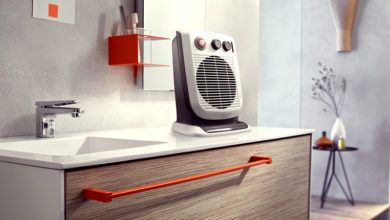Having a good and functional heater during the cold season is a no-brainer, except your escape plan from this world includes freezing to death. We say functional because there are some heaters that get weak with frequent use and don’t supply enough heat to warm up your house.
The winter season often sees people wearing a number of layered clothing just to keep warm and safe. It is during this period that sweaters, blankets, thermal wears, muffs and other thick clothes become the must-haves. For most people, the summer is one season in the year they always look forward to because it means they can now wear fewer clothes and go to recreational sites without a thought or two about being frozen solid.
Once the first rays of sun begin to pierce through the sky, a new year begins for some people. If heaters could hear, they’ll probably feel so sad that their loyalty during the cold season is being thrown into the trash can by the lousy summer.
Of course, the heat during summer varies with location. Some places aren’t so hot and may even require you to wear some layers at night because of the chills. Others areas are so hot, that you may be tempted to live in a fridge or freezer.
Irrespective of the amount of heat in a particular location, there’s always a need to deal with the issue of how to store the loyal heaters when the chills have gone and the heat has come to stay.
Once summer starts, a good number of people simply turn their heaters off. Well, the truth is that they won’t be needing it for a large fraction of the summer period. What is even truer is the fact that it makes a whole lot of sense to save some money on costs and energy bills when the heaters go to sleep.
But before you resort to just turning off your heater during the summer, we think there are a few important things to note about how to store a heater when the heat arrives in its blazing glory.
Now, storage heaters often take the heat when it is night so that it can be stored up for the next day. In some cases, the temperature may drop below expectation. It gets really cold on those days without any stored heat. So, you may be required to charge the heater through the night to ensure that there is sufficient heat for the day after.
One more thing you should bear in mind is that if you turn your heater off until the winter season, chances are high that you won’t be able to tell if the heater has taken French leave on you or it has a problem that will require some fixing. Trust us when we say you don’t want to get into the winter season only to find out your heater has already parked up. In fact, it could get really frustrating having to lose some warm days in the winter because it is taking too long to fix a heater you’ve only just discovered has an issue.
Other times, the heater may even need a complete replacement. If you don’t have the funds to get a new heater installed or someone who is going to make Christmas giveaways come early, we might as well just shoot Ice Age 4 in your living room. Sadly, it may get even worse when you have kids and elderly people in your home.
So, what to do with your heater during summer?
Keep it Dust-Free
You’ve got to ensure that the heater and its surrounding are always kept clean and dust-free by all means. The purpose is to avoid instances where the elements and bricks gather dust that may damage them and the heater by extension.
You’ll also avoid the musky odor of a heater that was off all-through summer and suddenly turned on during the cold season when you clean the heater frequently. Of course, you’ll extend the life of a heater with adequate and proper cleaning and maintenance.
You’ll also prevent the heater from turning yellow and reduce the likelihood of an overheating element – which happens as a result of the blanket cover that dusts and dirt make on elements.
Confirm that it still works
To avoid the sort of embarrassment that comes with turning on a heater when the winter arrives only to find out that it no longer works, check the heater once in a while to see if it still heats the home up as it should. This will also involve checking to see if it still stores heat too.
To get the job done, just set the heater to the heater’s output to a low level. It will store minimal heat and will run at a low cost the following day. The heat produced or the lack of it should help you find out if the heater will be ready to store and release heat during winter.
Do this as often as you can to avoid the rush or delay that comes with delivering and installing new heaters or repairing faulty ones.
Allow frequent checks by maintenance folks
You probably don’t need to have your heater checked as often as you will be required to have your gas systems checked. But, it is always good to have the heater checked by an electrician or a competent person at least once in about two years. The expert(s) will be able to confirm if its connections are ok or require tweaking and every other thing is in good condition.
It may be surprising to find out that a minor breakage can lead to a large and, sometimes, expensive damage. So, because it can happen to anyone, you want to save yourself some stress in the winter by asking your electrician to have a look at the heater.
The check may show some things that require fixing or replacement ahead of time.
Apply these tips and you’ll enjoy your heaters for many more years and save yourself the avoidable stress of suddenly-packed-up heaters in winter.





